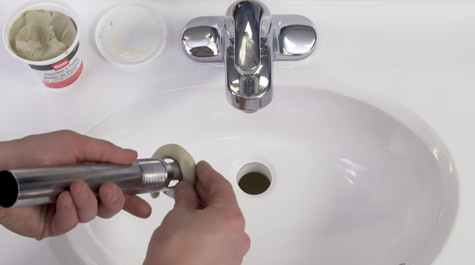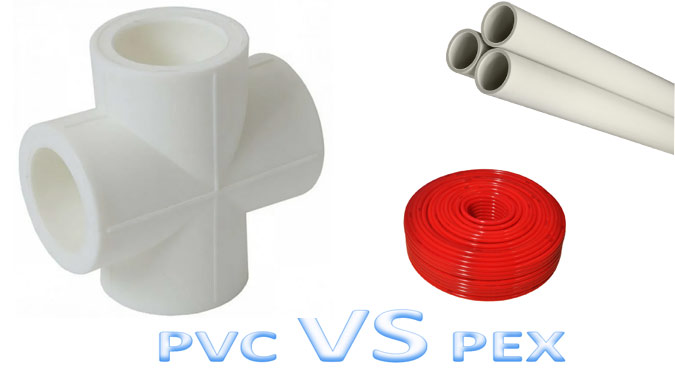Last Updated on April 3, 2023
When it comes to plumbing, there are a few essential tools that you need to know about. One of these is plumbers putty, which is used to seal joints and create watertight seals.
Another is silicone caulk, which is used for various purposes, including sealing joints, filling gaps, and weatherproofing. So what’s the difference between plumbers’ putty and silicone caulk?
This article will look at the two products and attempt to describe what they are used for. We will also examine their key similarities and differences to clarify which is best suited for any given purpose.
What is Plumbers Putty and How to apply?

Plumbers putty is a non-hardening material used to create a watertight seal. Plumbers putty is usually made from ingredients, including linseed oil, calcium carbonate, and talc.
Plumbers putty should only be applied to clean, dry surfaces. It would help if you first made a smooth-sided channel or groove you intend to seal (you can do this with a knife).
The plumber’s putty is pressed into place and flattened out to fill the channel, creating a completely flush surface. After that, the excess putty should be scraped away with a straight edge.
The plumber’s putty should then be smoothed down with water and left to dry for at least 24 hours before use.
What is Silicone Caulk and How to Apply?

Silicone caulk is a silicone-based sealant used to protect surfaces from the intrusion of water. Since it has a non-sticky consistency, it can function as a sealant while still being painted out to match surrounding colors and textures.
Silicone caulk should be applied in smooth, even strokes. You will probably want to use a caulking gun to ensure an even and smooth application. Silicone caulk typically requires 24 hours of curing time before it is ready to be painted over, so you may need to plan if you plan on painting soon.
Plumbers Putty Vs Silicone Caulk: 10 Major Differences

There are several ways in which plumbers’ putty and silicone caulk differ. This section will explore ten significant differences between the two products.
1) Uses & Applications
Perhaps the most crucial difference between plumbers’ putty and silicone caulk is that they are used for different purposes.
Plumbers’ putty is used to create a seal around a pipe or joint, while silicone caulk is used mainly for filling voids and cracks.
2) Durability
Silicone caulk may last longer than plumbers’ putty in some applications. However, since plumbers’ putty can be easily removed and re-used at any point during a project, it is often the preferred option when a seal or joint must be broken later to make additional repairs or modifications.
In most cases, a plumber’s putty is not as durable as silicone caulk. However, some plumbers’ putties are formulated with specific additives to increase their durability.
3) The Chemical Makeup
Both plumbers’ putty and silicone caulk are synthetic compounds. However, the chemical makeup of the two products is different.
Plumbers’ putty contains clay or another dry thickening agent, moistening with water before use. Silicone caulk does not have either clay or any thickening agent.
4) Dry Time
Plumbers’ putty must be moistened before use, and once moistened, it will remain workable for only a few minutes. Silicone caulk does not require any preparation. Instead, it is applied to the surface to seal joints or fill gaps.
5) Hardening Time
Plumbers’ putty hardens within 1 to 3 hours, while silicone caulk hardens within only a few minutes. This makes silicone caulk the preferred option when speed is of the essence.
6) Cleanup
Due to its clay base, plumbers’ putty often leaves behind residue during cleanup. Silicone caulk may also leave behind some rubble, but it does so to a far lesser extent.
7) VOCs
Plumbers’ putty has a high volume of volatile organic compounds or VOCs. Silicone caulk contains much lower levels of VOCs.
This may pose potential health problems when the product is used in enclosed areas that do not receive sufficient ventilation. However, there are now low-VOC formulations of silicone caulk available, posing less risk to users.
8) Availability
Plumbers’ putty may be purchased at most hardware stores. Silicone caulk is typically not found in DIY stores or big-box retailers and is purchased from specialty suppliers who provide it to contractors only.
9) Thickness
Plumbers’ putty is thicker than silicone caulk in its natural state but can be easily changed by adding water. After adding water, it becomes very thin and can even flow under pipes or other objects to form a seal. Silicone caulk is not as pliable.
10) UV Exposure
Silicone caulk will not harden or crack due to exposure to UV rays. Plumbers’ putty may begin to stiffen and lose its tackiness after it has been exposed to too much sunlight.
This is a list of 10 significant differences between silicone caulk and plumber’s putty. While they are both synthetic compounds, they each have their own unique set of properties, making them suitable for different applications.
The Pros and Cons of Plumber’s Putty Vs Silicone Caulk

Both plumber’s putty and silicone caulk have many advantages and disadvantages. Here, we will lay out the pros and cons of each.
Pros of Plumbers’ Putty:
- Can be used for many different applications & repairs
- Many types are available with different properties suited for specific needs
- Affordable
- Reusable (if unused)
- Low VOCs
Pros of Silicone Caulk:
- Will not crack or dry out due to exposure to UV rays
- May be used for many different applications & repairs (similar to a plumber’s putty)
- Many types are available with different properties suited for specific needs
- Affordable for some applications/volumes, not affordable for others
- Not reusable (if used)
Cons of Plumbers’ Putty:
- May dry out in the container over time, leading to contaminants & reduced performance (although many types are formulated to avoid this problem)
- May crumble or crack when exposed to extreme changes in temperature or humidity levels (although this is less common than in the past)
- Contains high VOCs and therefore may pose potential health risks if used indoors without sufficient ventilation or outside in poor environmental conditions (although low-VOC formulations now allow for use indoors as well as outdoors)
Cons of Silicone Caulk:
- May dry out over time, leading to contaminants & reduced performance (although products now have a longer shelf life)
- May deteriorate or fracture with time, leading to cracks and reduced performance (especially when exposed to sunlight)
- Contains high VOCs and therefore may pose potential health risks if used indoors without sufficient ventilation or outside in poor environmental conditions (although low-VOC formulations now allow for use indoors as well as outdoors)
Which One is Better for You?
Silicone caulk is not as pliable or moldable as plumbers’ putty. It is also not reusable, making plumber’s putty the cheaper option over time if you have multiple repairs to complete.
Plumbers’ putty does pose several risks due to its high VOCs, which may lead to health hazards, whereas silicone caulk does not.
If you use both types of compounds, make sure they are allowed for indoor usage and, if possible, purchase low-VOC formulations to avoid these risks.
Summary
Both plumber’s putty and silicone caulk have unique properties, making them suitable for different applications. So, it ultimately comes down to what you are looking for in a sealant or adhesive; durability, affordability, low VOCs, etc.
Make a decision based on your specific needs. With so many options available on the market today, there is sure to be a product that fits the bill. Thanks for reading.


